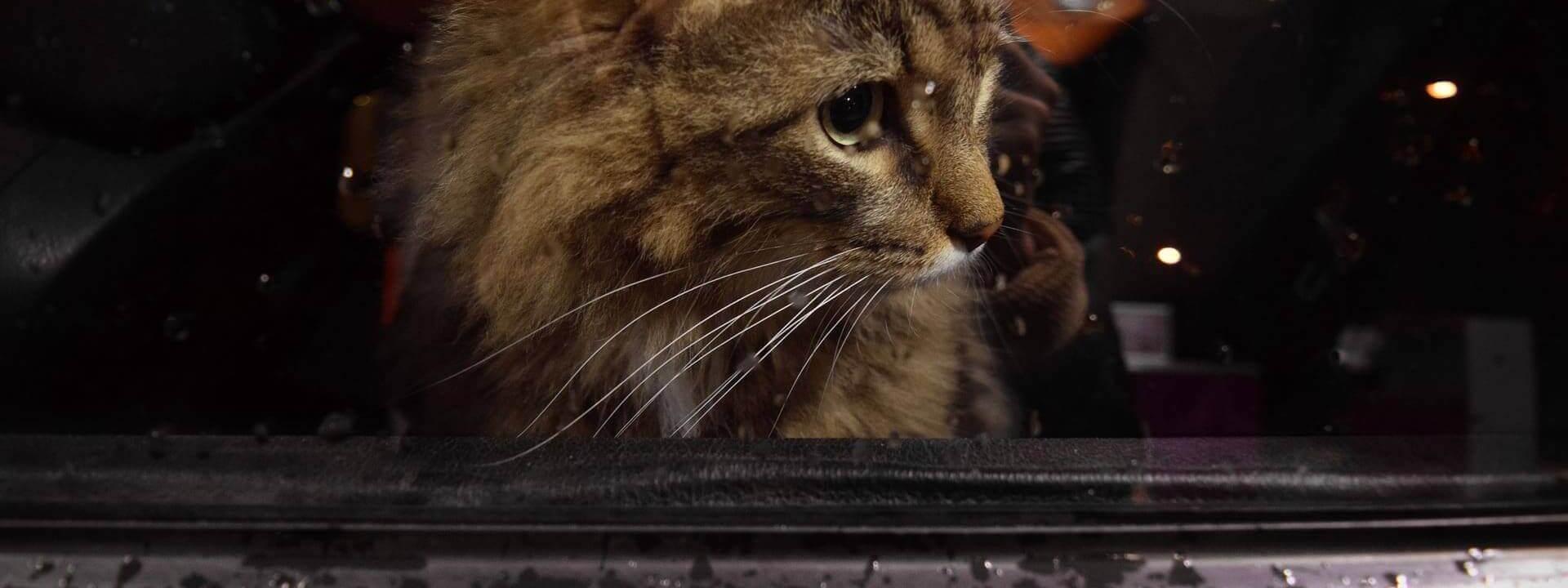Let us help make getting your cat to the clinic easier on you AND your cat!
One of the challenges many cat owners face is getting their cat to the vet clinic – we know that regular vet care is important for our feline friends, but actually bringing our cats to the clinic can be a real challenge.

Dr. Lambrecht’s cat “Bug” on her way to a paddling expedition – do not attempt this method of cat transportation at home!
One of the most important things you can do is to help your cat get used to its carrier. A cat that is comfortable with its carrier will feel safer and more relaxed when traveling outside its home. Try the following tips to help your cat learn to enjoy its carrier:
- Leave the carrier out in a room frequented by your cat (living room, bedroom, etc.), so your cat can explore its carrier at its own pace
- Place treats or toys in the carrier to encourage your cat to go inside on its own. Try using a synthetic feline facial pheromone spray such as Feliway (best when used at least 30 minutes before allowing your cat to enter its carrier) to encourage your cat to explore its carrier.
- Take it slow: don’t force your cat to go in its carrier! It may take several weeks for your cat to learn to feel comfortable in its carrier and go inside on its own.
- Once your cat is comfortable exploring and spending time in its carrier, you can try bringing your cat in its carrier out to your car. Don’t turn the car engine on – let your cat get used to being in the car first without the added noise of a running engine. Try offering your cat treats or a toy in its carrier to make its experience in the car more positive.
- If your cat seems relaxed in the car, turn the engine on without driving the car anywhere. Eventually, work your way up to driving around the block or taking short car rides with your cat. Remember, the most important thing you can do is to take it slow!
Click here to read more tips for traveling with your cat, courtesy of the American Association of Feline Practitioners (AAFP).

